Knowledge
09.01.2022 The Colors of Gemstones
The value of a gemstone depends strongly on its color. Colored gemstones increase in price when they have rich or intense colors and the color is evenly distributed. Depending on the type, there are color variants that are particularly sought after and are considered ideal colors. Natural colored stones are more valuable than those whose color has been subsequently improved by treatment.
In addition, the color of a gemstone is decisive for its naming, because different varieties of the same mineral are traded as different gemstones. Thus, any corundum that is red is called a “ruby.” All other colors of the mineral, from white to yellow, orange, pink and blue, become “sapphire”.

What causes the different colors of gemstones?
The color in which gemstones shine depends on the nature of the crystal structure. In the case of idiochromatic gemstones, the coloration results from disturbances or deformations of the structure of the mineral itself. In contrast, allochromatic gemstones get their color from impurities, of small quantities of other elements in their crystal structure that serve as “coloring agents”.
Especially ions of vanadium, chromium, manganese, iron, cobalt, nickel and copper as admixtures provide quite different shades of color, because these elements absorb different wavelengths of light.
In addition, the color of gemstones can also change as a result of radioactive radiation and environmental or external influences. When gemstones are heated, this circumstance is used to artificially enhance the color of gemstones.
In the case of colored diamonds, for example, a reddish hue is produced by defects in the crystal structure, while radioactive radiation produces a green color. The element boron, on the other hand, produces blue diamonds, while nitrogen admixture produces yellow diamonds.
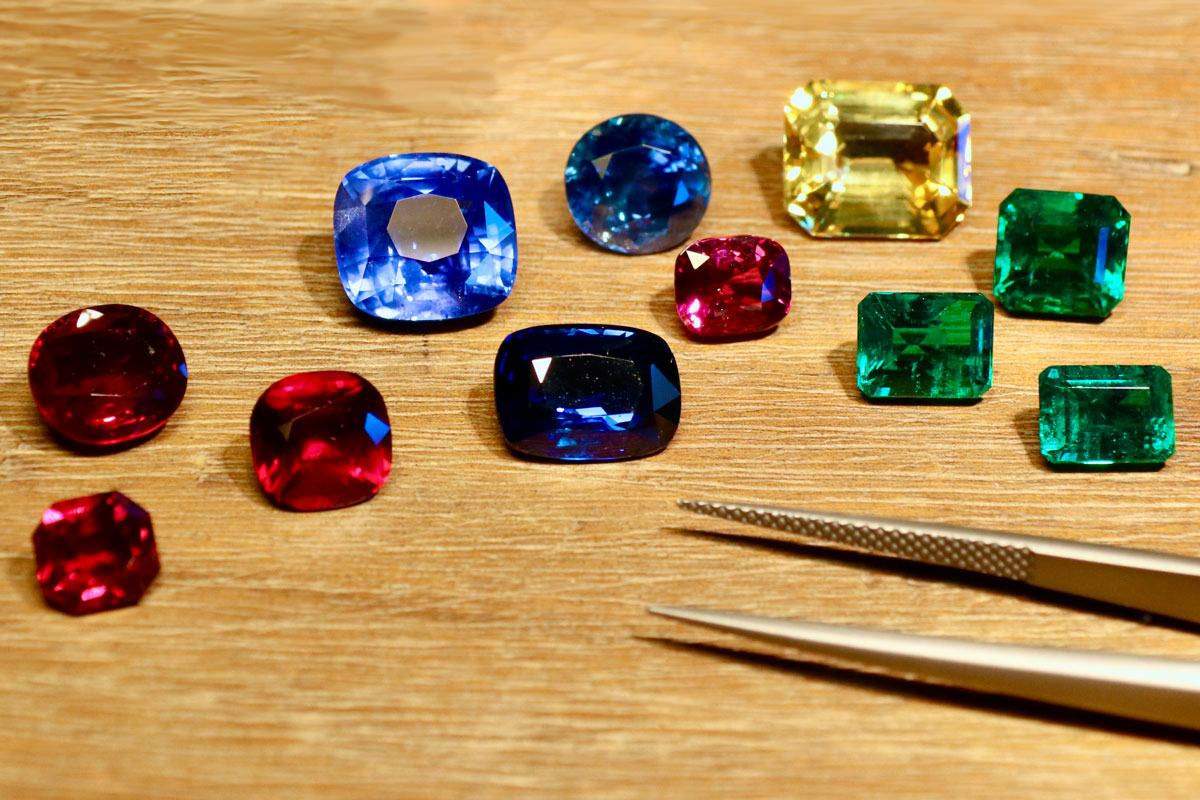

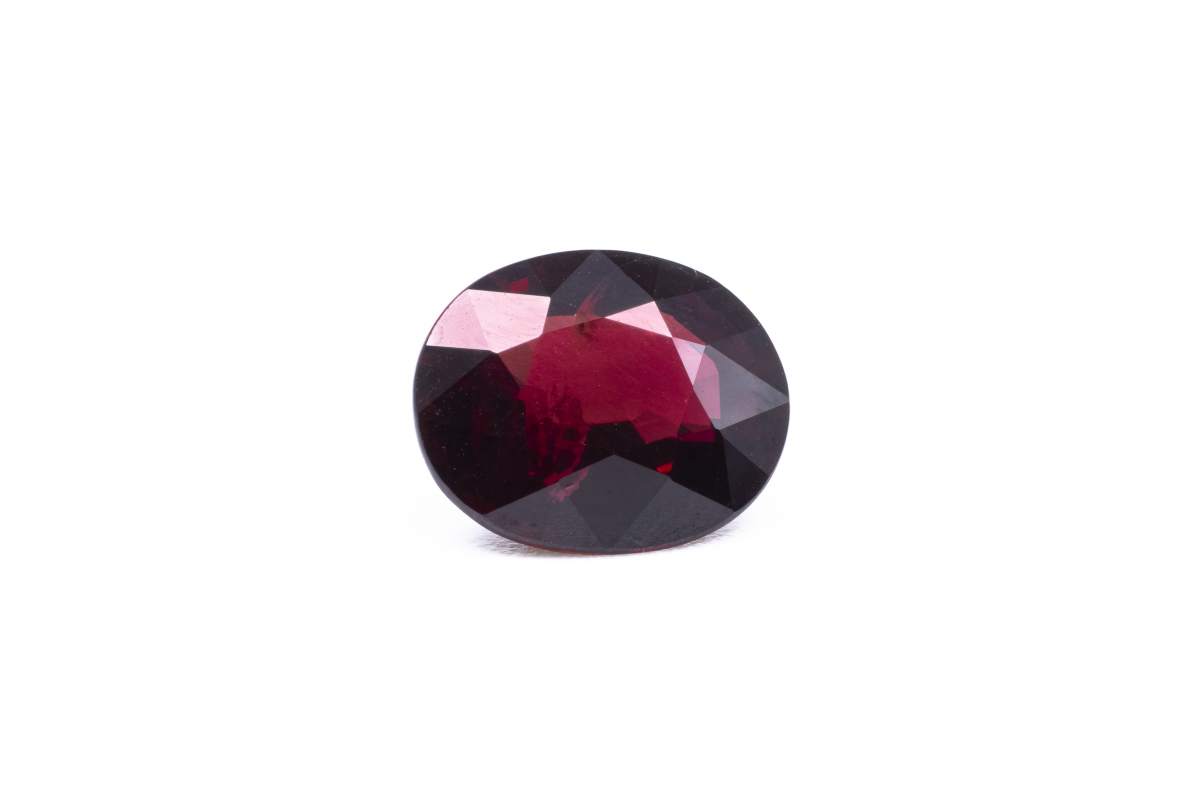

The most sought-after red gemstone is certainly the ruby, the red variety of the mineral corundum. After all, the name itself comes from the Latin “rubeus”, which means nothing other than “red”. Rubies come in many shades of red. In any case, the more intense the red of the stone, the more expensive it is. The most sought-after stones are those with the hue “pigeon blood“.
Among sought-after red colored gemstones are spinel and garnet. Until the 19th century people were not able to distinguish ruby from spinel, so all red stones were sold as expensive “ruby”.
But beryl also occurs in red: As “red beryl” (marketed as red or scarlet emerald) with color shades between orange-red over red-violet to a dark red and as morganite in most different pink colorings.
As rubellite also the red variety of tourmaline is traded as jewelry and investment gemstone.
Blue is the most important and most demanded color in sapphire. Mainly responsible for the coloration of blue sapphire is titanium oxide in interaction with iron. The highest valued is a rich, deep, yet clear blue, as is often found in sapphires from Kashmir or Burma.
The blue variety of zoisite, trading name tanzanite, is one of the most expensive minerals in the world due to its rarity. Here intense blue-violet gems are particularly sought after.
In the case of indigolite, copper provides the typical indigo blue color of this variety of tourmaline. In the case of Brazilian Paraíba tourmalines, copper together with manganese also provides a blue-green, turquoise color.
Due to the typical blue to blue-green coloration the aquamarine came to its name as a blue variety of beryl. The name is derived from the Latin “aqua marina”, translated “sea water”.
With turquoise, on the other hand, the mineral gave the color its name. With this gemstone, the intensity of the color is what counts most.
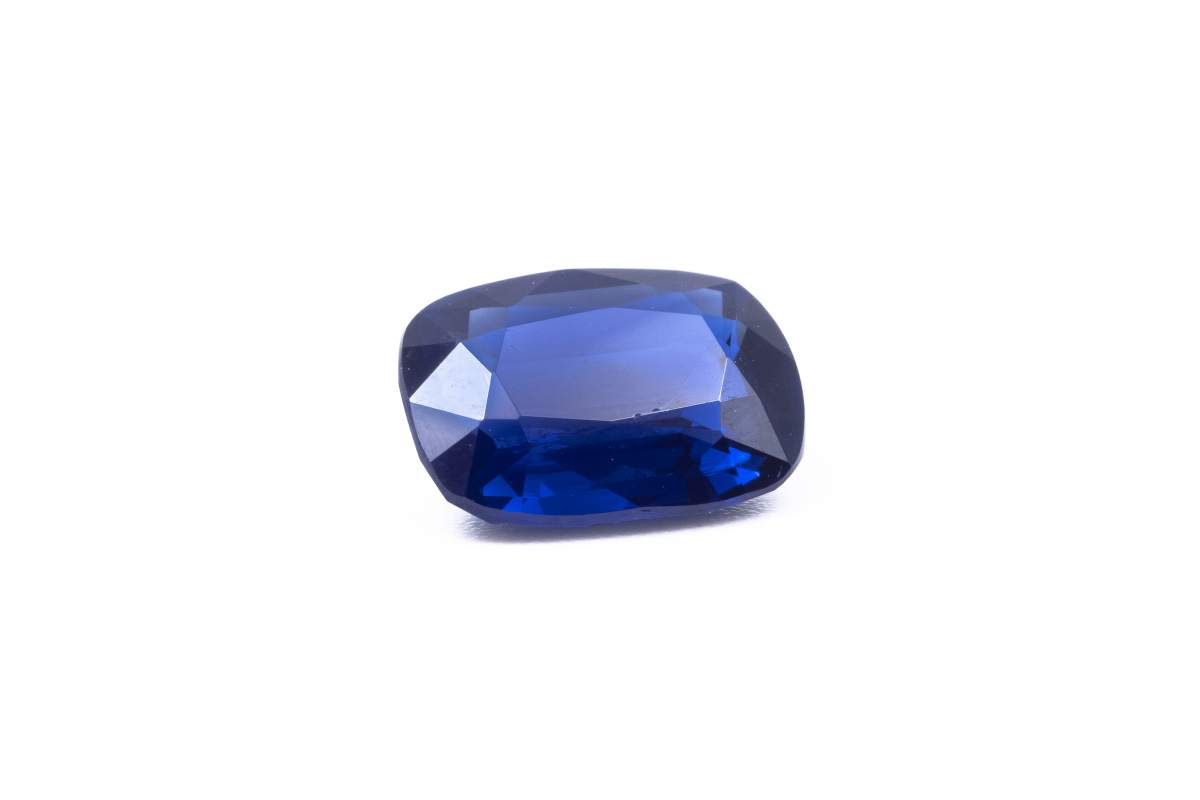

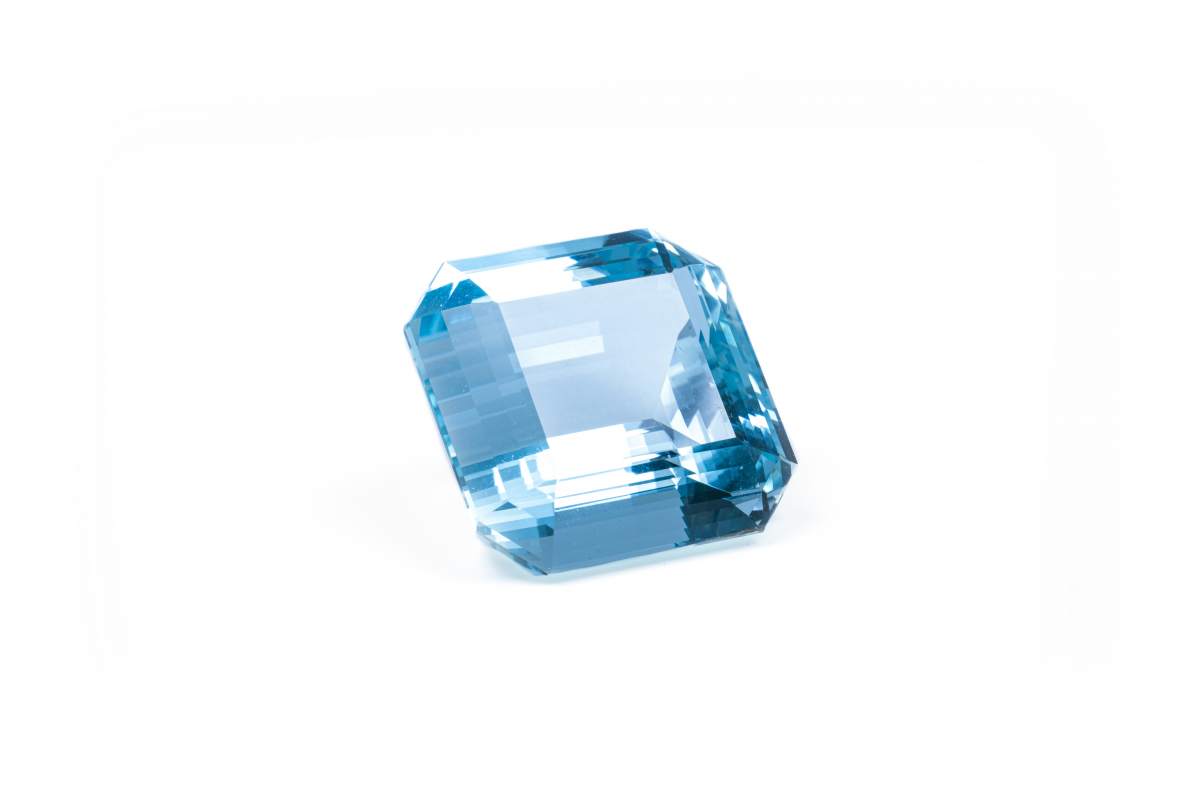
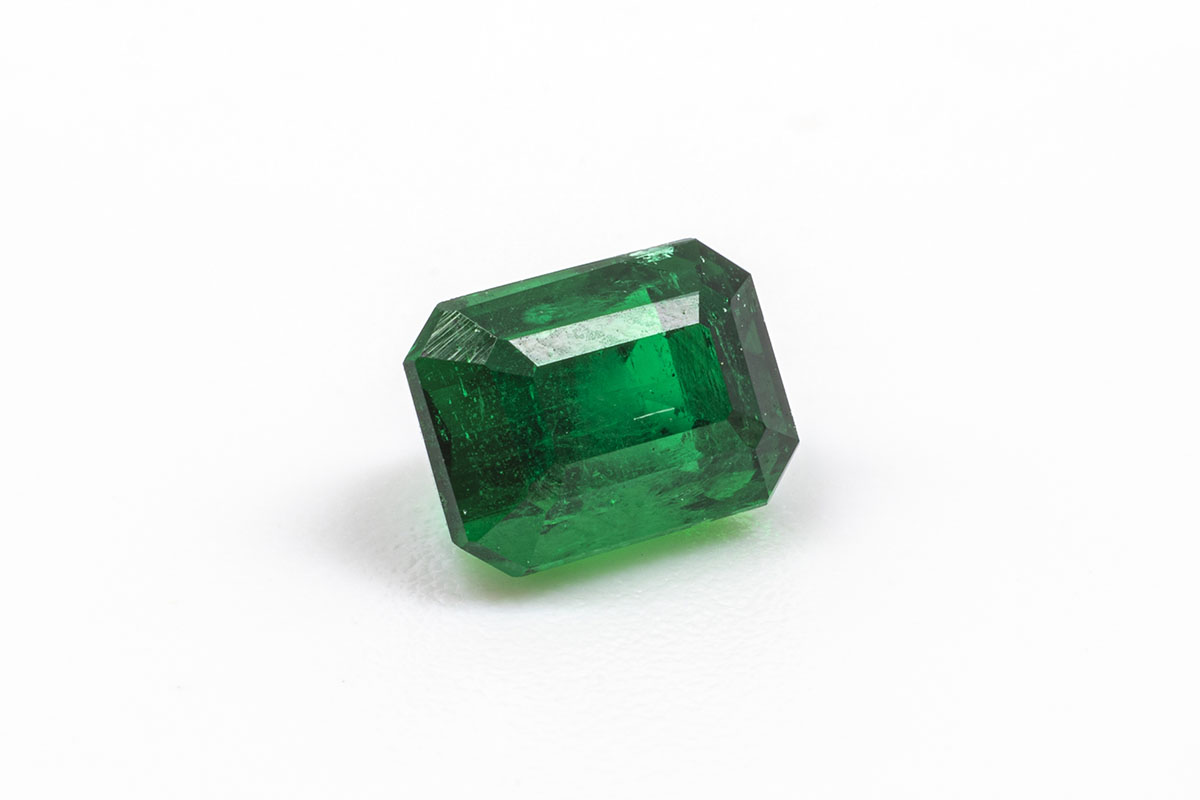


The emerald is considered to be THE green gemstone. Its very name is derived from the old French esmeraude which comes from the Greek “smaragdos”, which means nothing other than “green stone”. The color palette of the emerald ranges from dark blue-green to light yellow-green, depending on the amount of chromium and vanadium ions.
However, there are numerous other gemstones that occur in green color varieties. In green sapphire, traces of chromium and iron cause the coloration. Thereby, numerous shades of green occur in sapphire.
Verdelite is the green gemstone variety of the tourmaline family. Here, too, the nuances range from a light yellow-green to a blue-green and emerald-green to a dark bottle-green.
A sought-after green colored gemstone, both as an investment and for jewelry, is chrysolite, better known as peridot. The coloration of peridot ranges from light yellow green to vivid light green to rich olive green.
The dark green tsavorite (or tsavolite) is the most important and best known variety of grossular, a variety of garnet.
Among yellow gemstones, sapphires and tourmalines are also among the most sought-after gemstones.
In yellow sapphire, admixtures of iron provide numerous shades of color from pale yellow to lemon to honey and orange. Yellow tourmaline belongs to the rare tourmalines. Manganese is responsible for the coloration. The color palette ranges from yellow-brown to yellowish-green.
The yellow variety of beryl is traded as golden beryl or heliodor (translated from greek: Gift of the sun). With this color gem not only the admixture of iron provides for the yellow color. It can also be created or enhanced by radioactive radiation. This reaction is also used to improve the color of pale specimens by artificial irradiation.

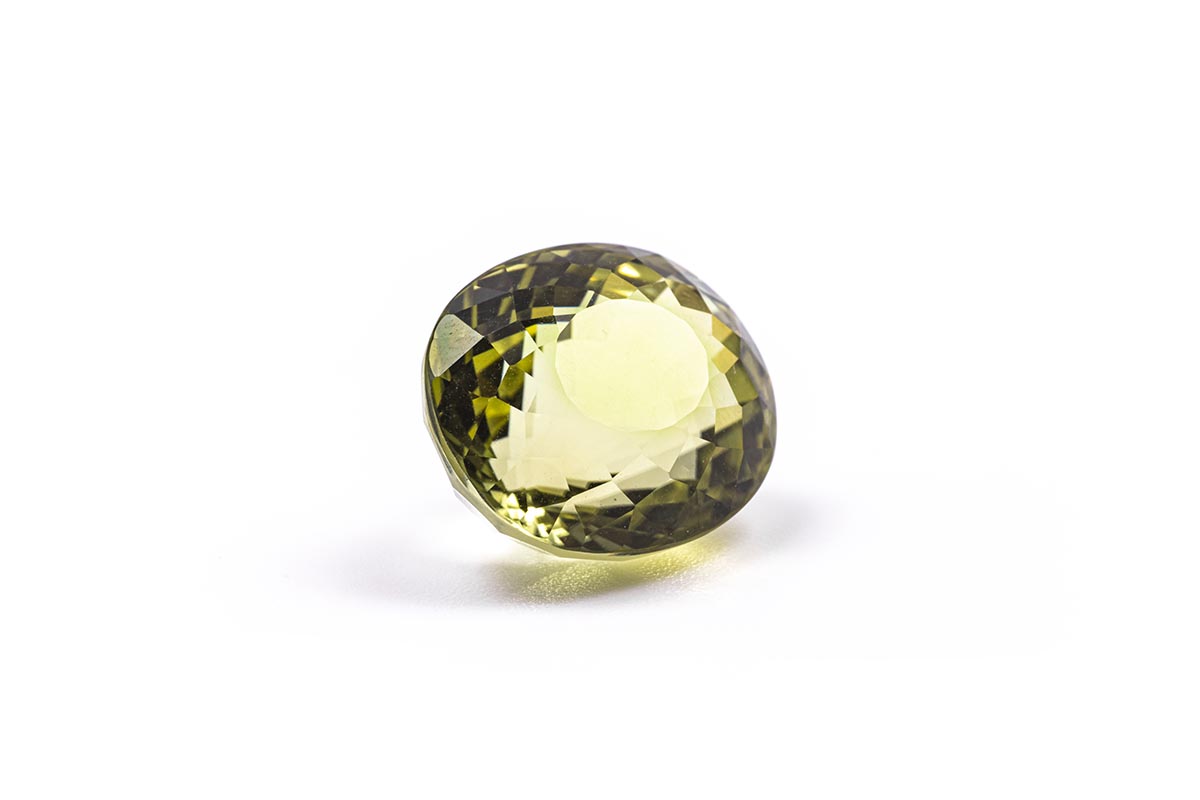

Gemstones with two or even three different main colors are very special. Among the colored gemstones that are also suitable for an investment, multi-color tourmalines stand out here, where zones of different colors can appear in one crystal. The color gradient of two-color bi-color or tri-color tourmalines usually contains the primary colors red, yellow and green.

Color changing Gemstones
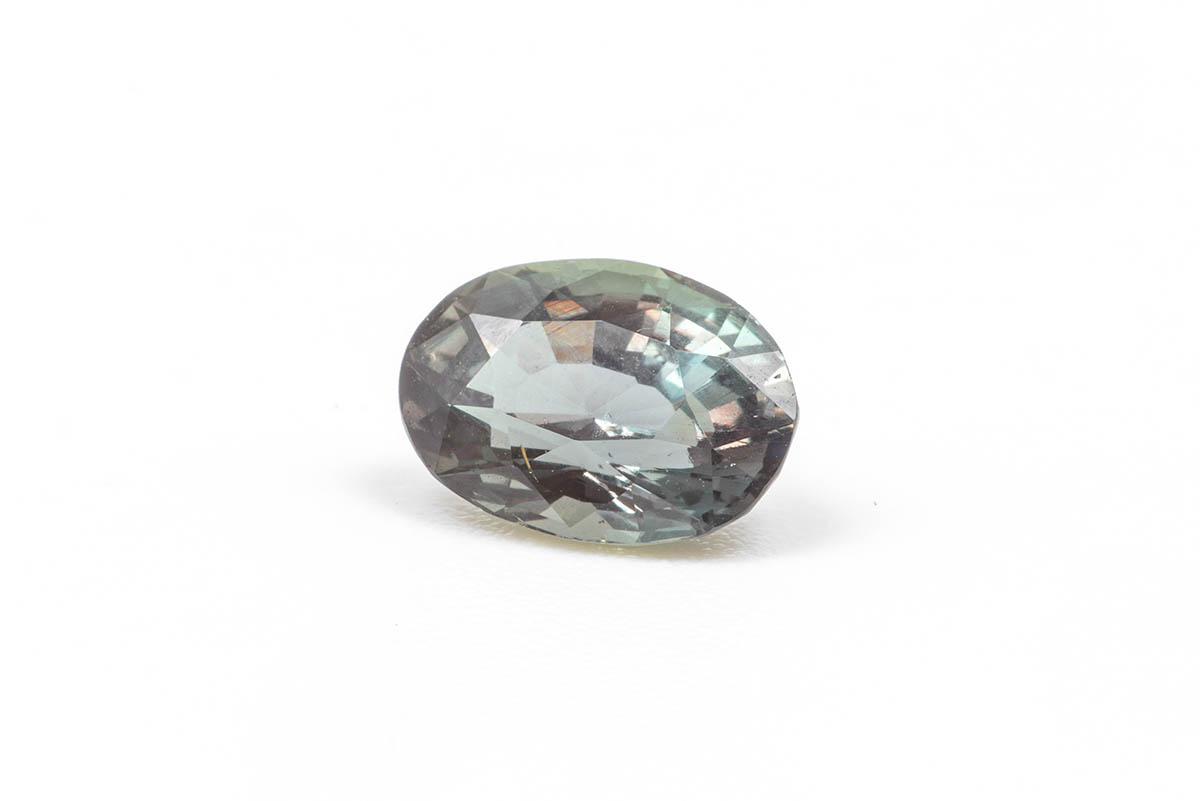
In addition to gemstones that are actually multicolored, some minerals are also found to have certain effects that suggest a change in color or at least a change in hues.
While in a stone with pleochroism the incident light rays are refracted, reflected and absorbed several times and thus provide for different colors depending on the viewing angle, the alexandrite effect makes a stone shine in different colors depending on the light source.
Vivid color changes tend to occur with tanzanite, but other stones can also exhibit color change effects. The alexandrite effect occurs most strongly with the gemstone of the same name.

